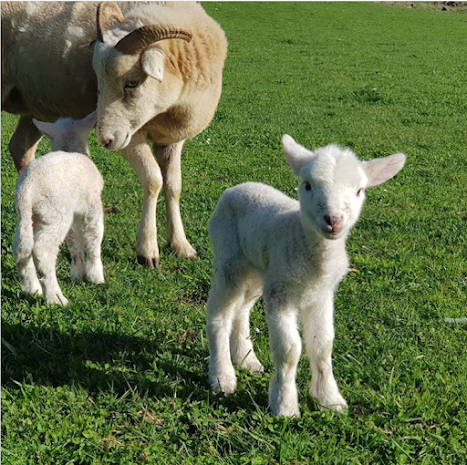Lambing season is finally over and everyone is FAT
Too much of a good thing
It's a strange thing to say, in these times of environmental disaster in so many parts of the world, but we have too much good grass at the moment! We're moving the sheep around almost daily, to spots where there is a little more roughage. The horses too, who make their displeasure well known!
What? You name EVERY lamb?
We're also figuring out which ewes we want to keep as breeding stock, based upon the information we have gathered about their pregnancy, birthing, health of the lamb and the ewe's weight. We number (and name) every lamb. I know, it's probably rather silly, to do as 'proper' farmers, but I enjoy coming up with creative names and it means we know whom we are talking abut when we discuss the mums and bubs.
Getting too attached to orphans
One lamb I became quite attached to was Ripley. His mother had severe birthing problems and died that day, but we managed to pull Ripley out and give him some of his mum's vital colostrum, the first milk, which contains goodies for his immune system. In the first 24 hours of life a lamb's stomach and intestinal lining is 'open' to receive good bacteria. Then it closes and their immunity is pretty much set for life. Ripley was then bottle fed for 2 days, living in my cat Harry's playpen in front of the fire with regular walks outside. Then our friend down the road took him on and now he is HUGE and she has decided to keep him as a breeding ram. I didn't want to continue bottle feeding. I just don't have enough hours in the day, so I was sad to see him go, but can visit any time I like, which is fabulous. It's always a risk that you will become too attached to orphans, particularly soft, woolly ones such as Ripley, who has a 'ripply' coat and is a bit of a miracle boy. (Ripley's, believe it or not).
Fungi are fun!
We have been doing a lot of research into soil health and our aim is to use as few chemicals as is possible. In my vegie garden I use NO sprays of any kind - no herbicides, pesticides or synthetic fertilisers. I harvest something every day, all year round. Certain types of fungi, known as mycorrhizal, are known to have a symbiotic relationship with plants. They trade what the plant produces from sunlight (sugars) for nutrients locked in the soil the plants' roots otherwise can't access. This way you don't have to constantly add minerals, when they are in fact already there, just locked away by the iron content in the soil for instance.
It's a LOT to learn.
my lettuce and baby leaf spinach 'coffin' bed
The wrens' garden, looking south
Hard graft I tell you!
In my other garden, trees and plants are chosen for shade, wind protection, flowering seasons and bird habitat. There was virtually no garden here when we bought the place, so its been almost 3 years of constant planning and planting, weeding and mulching, building beds, removing rocks and tree stumps, adding the best quality ingredients for soil health, which of course, means plant health and our health.
Because we are on top of the hill, we get strong winds, so I have been quite manic about putting up windbreaks to protect the garden, create a safer environment for the wee birdies and make it more pleasant for ourselves! We've utilised the old wooden sheep yards for this by recycling the fabulous weathered timber.
Sometimes we forget what it used to look like, so it's good to look at the photos from week one occasionally and compare how it looks now.
January 2018
November 2020
Well, that's it for now. Will keep you posted!
DON'T FORGET! You can follow me daily on instagram - @mytasmaniangarden
click here: my tasmanian garden







Comments
Post a Comment